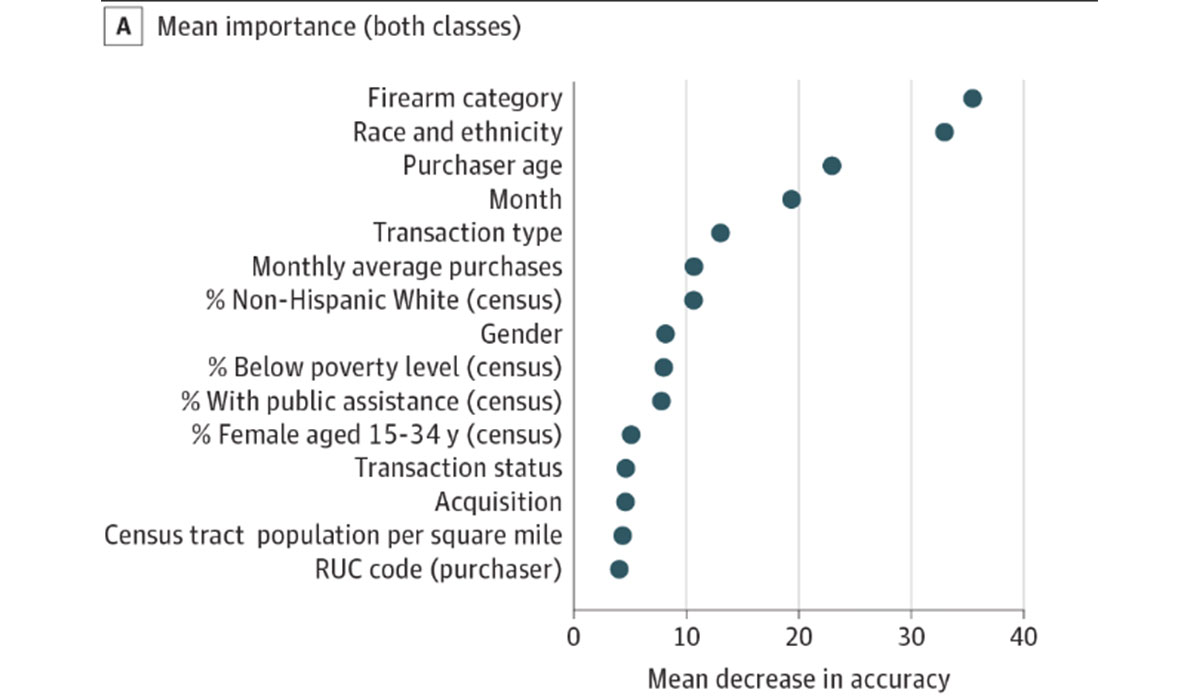In 2020, more than 24,000 people used a firearm to end their life. Limiting firearms purchases for individuals who are at risk of self-harm can reduce suicides. But identifying those who are a risk remains a challenge.
Hannah Laqueur and her team used firearm transaction records from California to identify people at risk of using a gun to end their life. In California, all purchases and transfers of firearms must be registered and include: buyer and seller identifiers; address, date and time of the transaction; and the firearm caliber, type, make, and model. Researchers used a computer program to analyze this data and predict suicide.
Of the almost five million transactions that occurred between 1996 and 2015, 3,278 transactions resulted in suicide by firearm within one year of purchase. The researchers sorted the characteristics in order of how accurate they are at predicting risk, as shown in the graph.
The type of firearm was the most important predictor of suicide. This finding was consistent with previous research showing that buying a revolver was associated with higher suicide risk. Age and ethnicity of buyer were important predictors of risk as well. White men were more likely to end their life with a firearm, and this risk increased as they grew older. Month of purchase was also an important predictor of suicide, with cases peaking in the spring and early summer.
There is an opportunity to reduce harm before it occurs. Training gun retailers to be aware of this set of risk predictors is worthy of intervention testing, the investigators suggest, even though the overall risk of suicide from any individual sale is low.
Databyte via Hannah S. Laqueur, Colette Smirniotis, Christopher McCort, et al, Machine Learning Analysis of Handgun Transactions to Predict Firearm Suicide Risk, JAMA Network Open, 2022.














